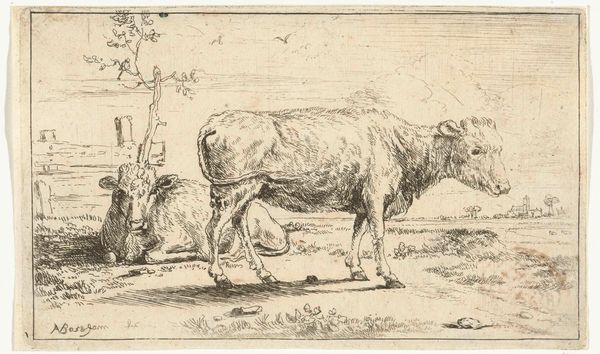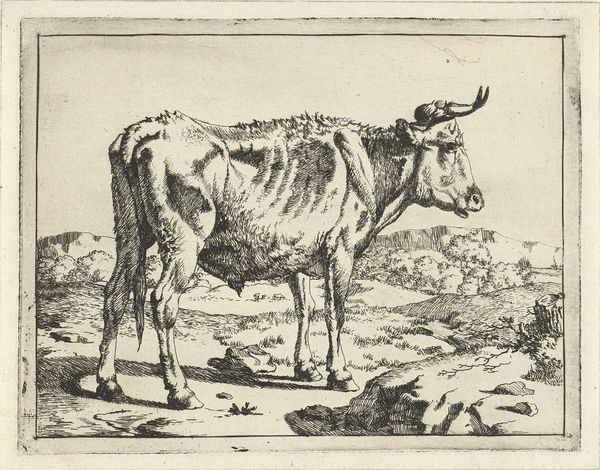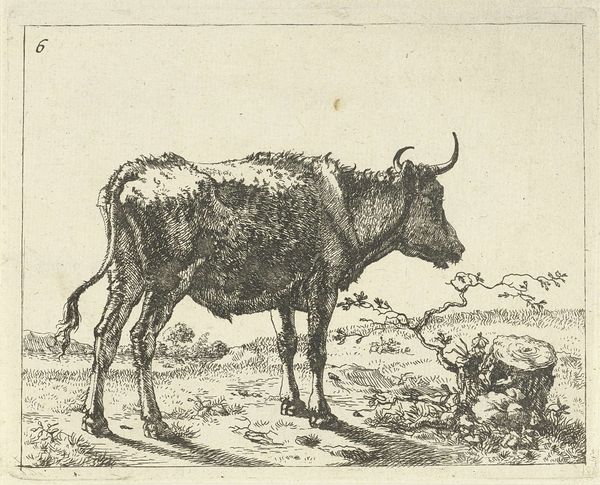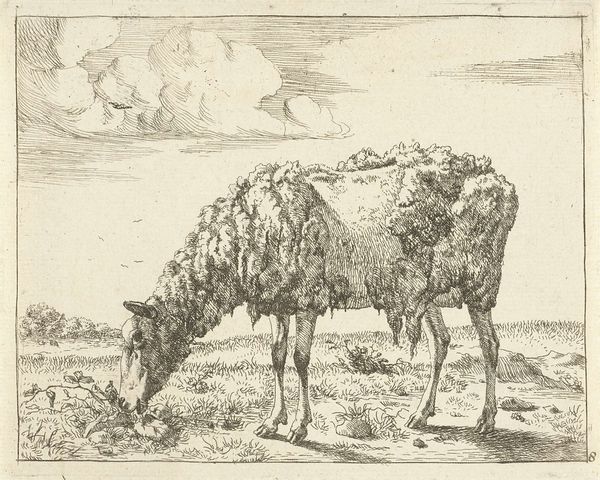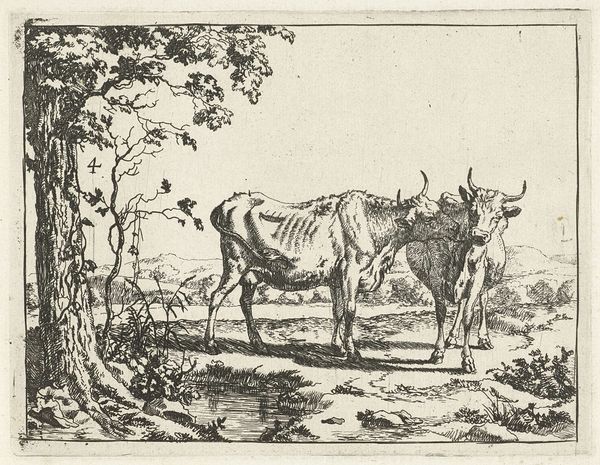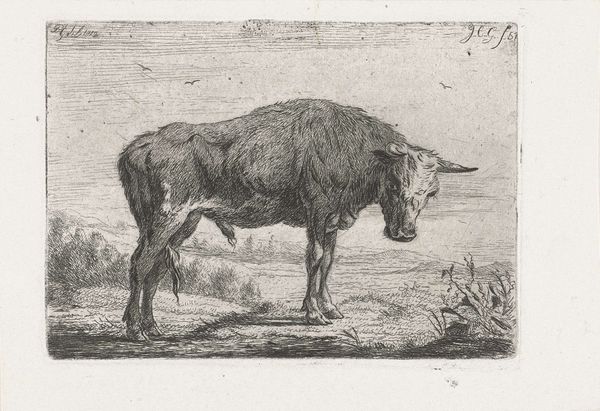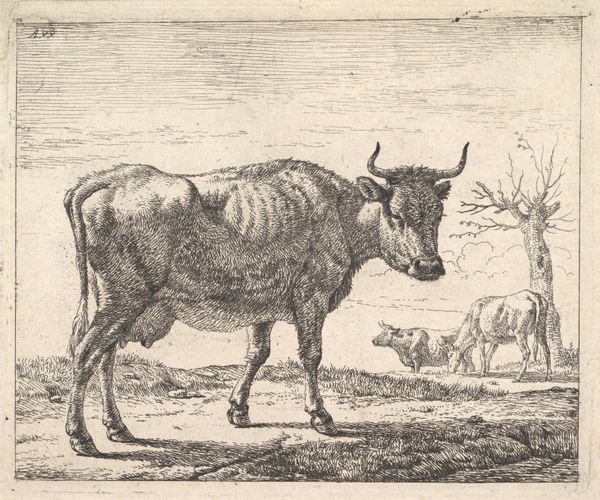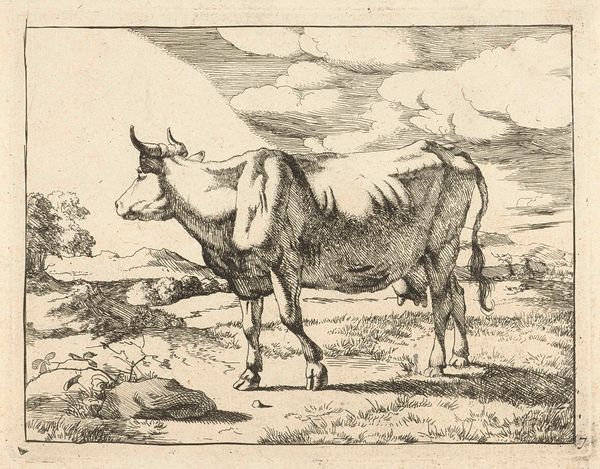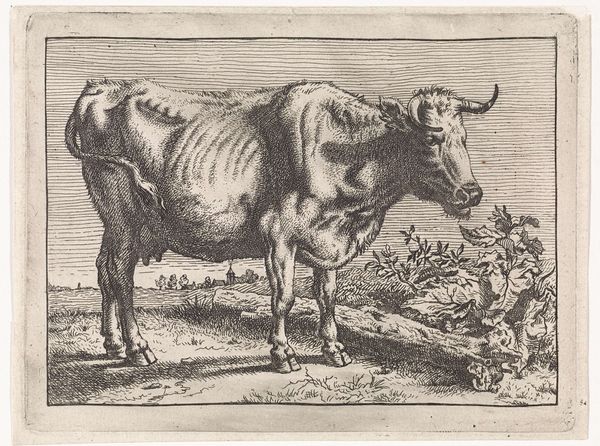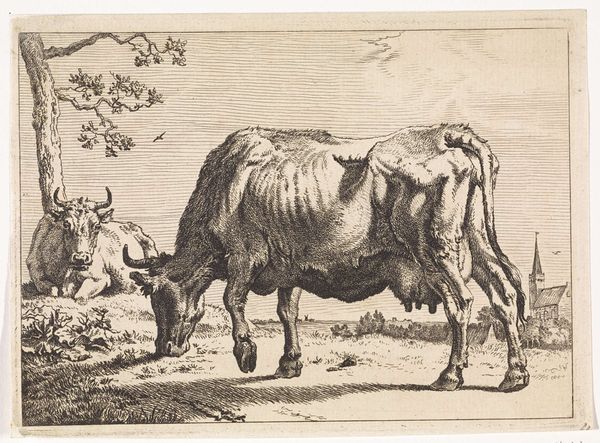
drawing, etching, pencil, engraving
#
drawing
#
pen sketch
#
etching
#
pencil sketch
#
landscape
#
pencil
#
genre-painting
#
engraving
#
realism
Dimensions: height 73 mm, width 92 mm
Copyright: Rijks Museum: Open Domain
Editor: This is "Standing Cow with Two Sheep" made between 1796 and 1845 by Anthony Oberman. It looks like it was made using pencil, etching, and engraving. It’s a fairly simple scene, the animals are all standing around a tree and I think it's beautifully rendered. How would you interpret this work, especially considering the time it was made? Curator: Given its creation during a period of significant social and political change, one might consider how "Standing Cow with Two Sheep" reflects shifting perceptions of the pastoral ideal. While seemingly a straightforward depiction of rural life, it’s worth noting how Oberman presents this subject. Does he romanticize the scene, or does he depict it with a more objective eye? Editor: It feels pretty objective to me. Not overly romantic, more… realistic? Curator: Exactly. Consider the burgeoning urbanization and industrialization occurring at the time. Art featuring rural themes could serve various purposes – a nostalgic yearning for a simpler past, a commentary on land use, or perhaps even a subtle form of social critique. What kind of audience do you think this work would appeal to at the time? Editor: Perhaps people who had moved to the cities and were looking back on a rural life? Or maybe just those who were interested in a kind of realistic view of the countryside. Curator: Indeed. Moreover, consider where works like this were displayed and consumed. Were they accessible to a broad public, or primarily enjoyed within elite circles? The answers to these questions shape our understanding of the artwork's role in society. Editor: That’s a really interesting point. I hadn’t considered who would have actually seen this originally. Curator: By examining the historical context, exhibition venues, and social reception of artworks, we can gain a deeper appreciation for their significance beyond just aesthetic appeal. Editor: Definitely, it gives you a much more complete view of the piece and what it might have meant. Curator: Absolutely, analyzing art this way invites us to explore the dynamic relationship between artistic expression and socio-political forces.
Comments
No comments
Be the first to comment and join the conversation on the ultimate creative platform.
